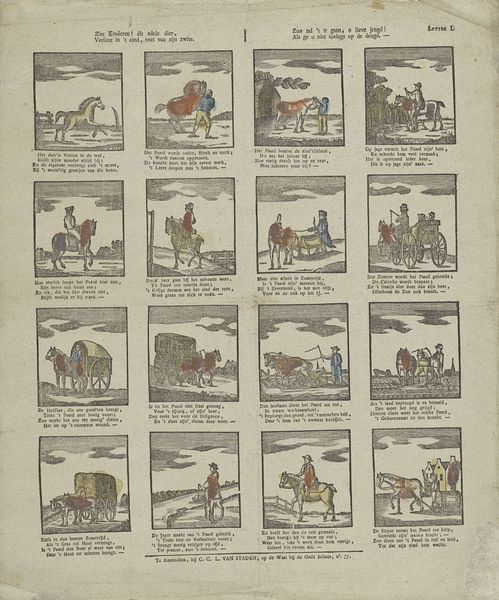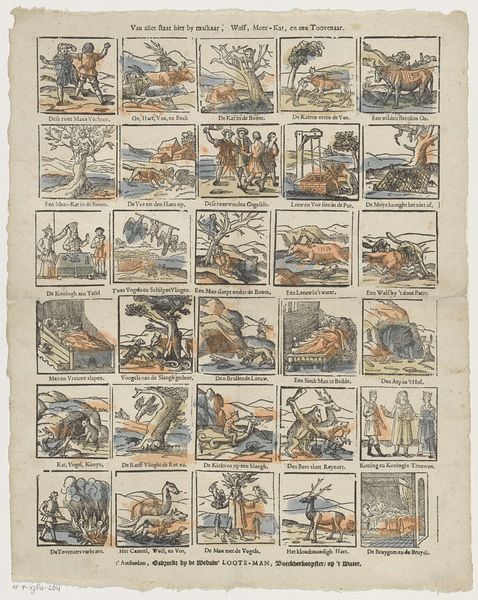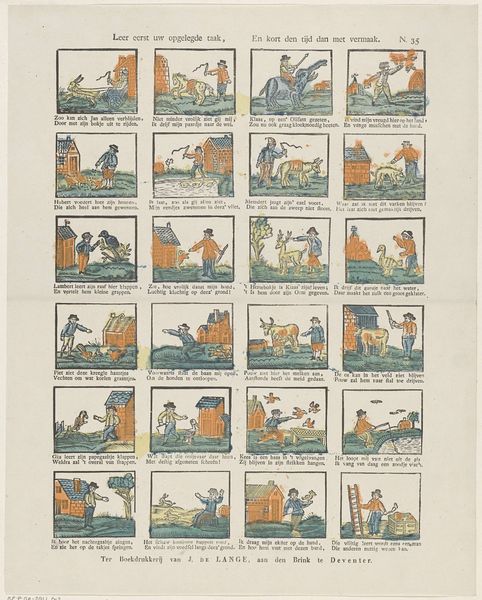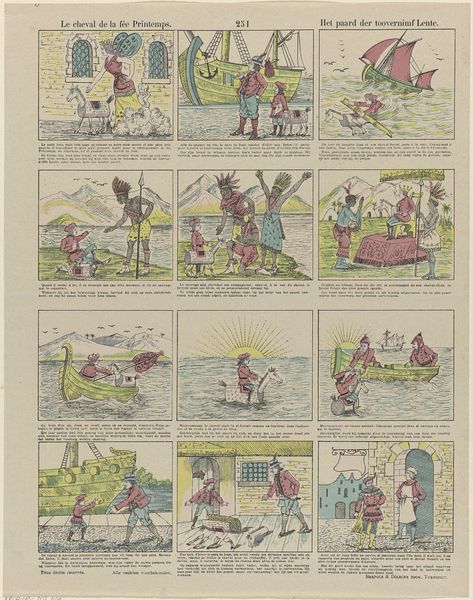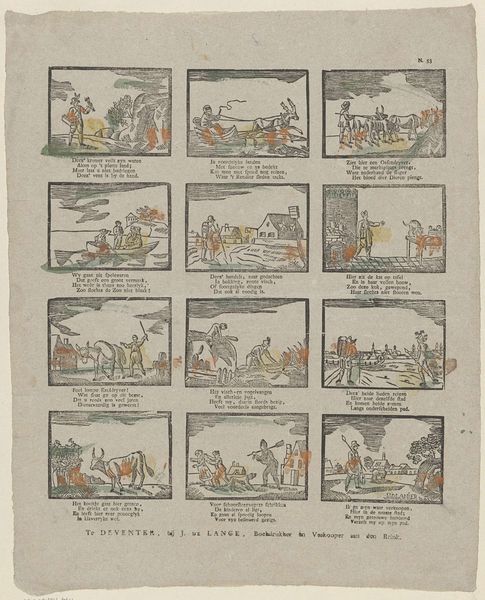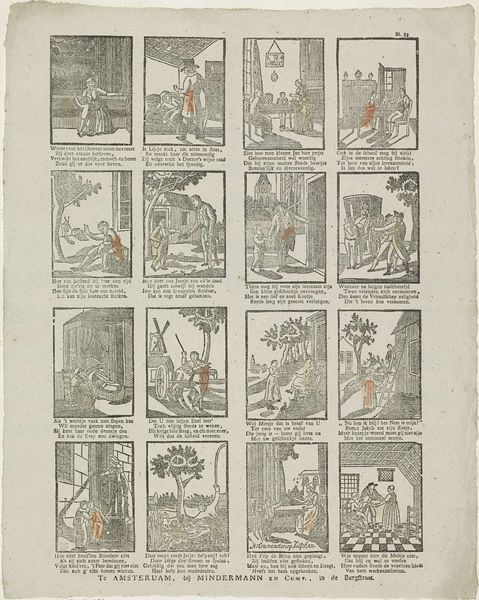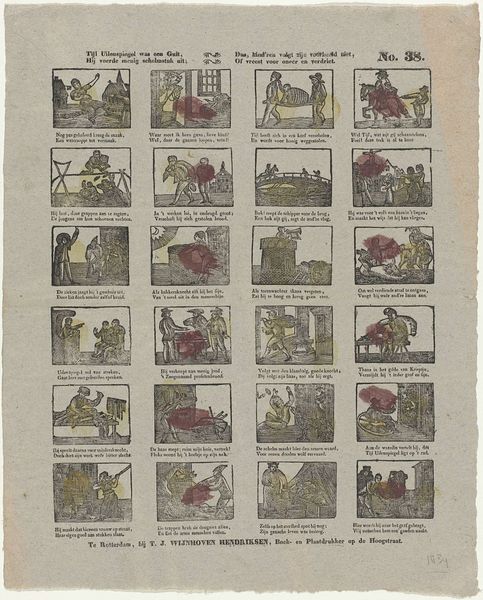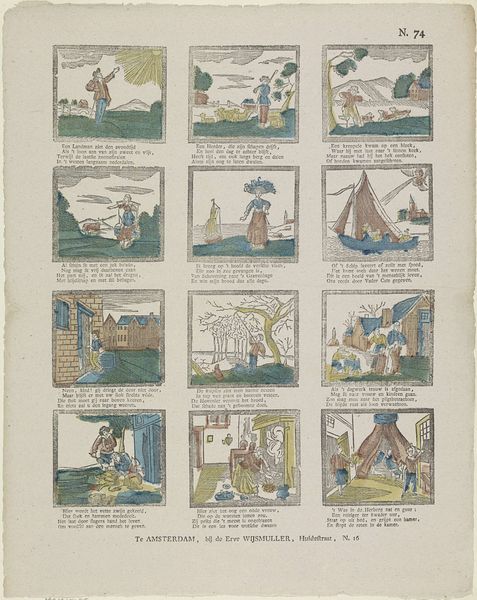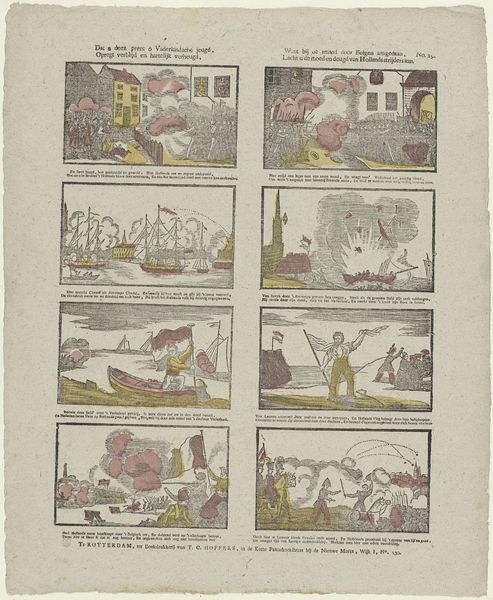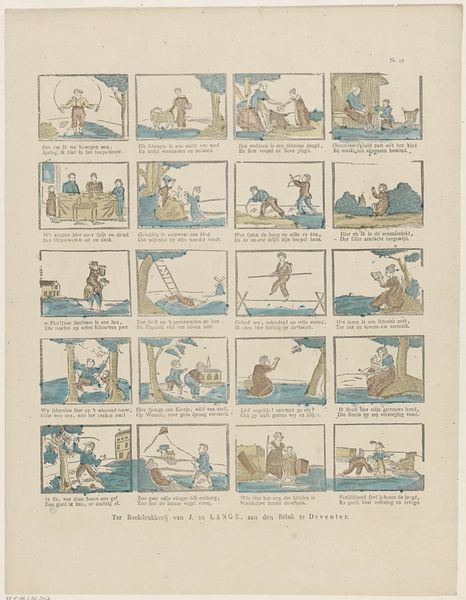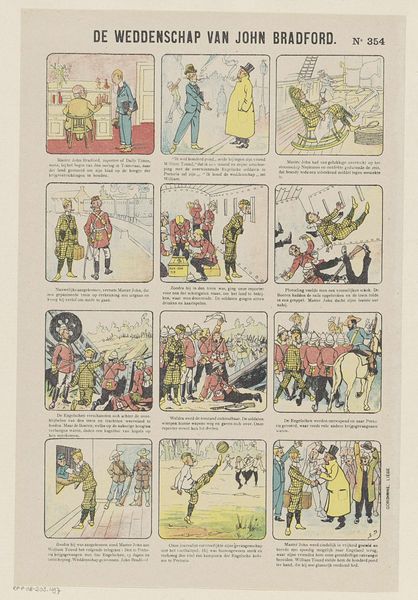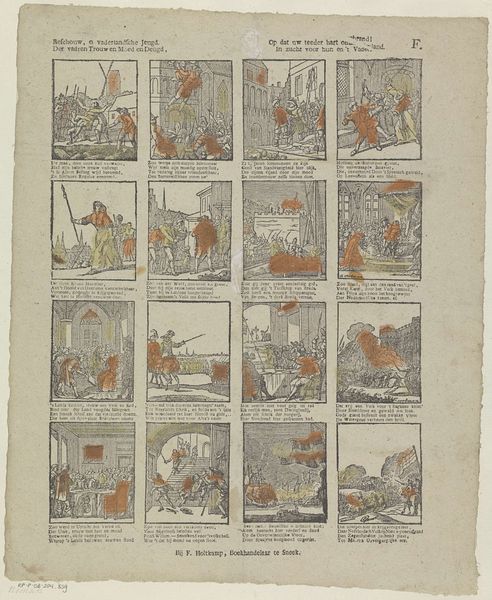![[Wat voor monsters / wat voor dieren/) Geefd on niet de zee al uyt [(...)] by Jacobus Conynenberg](/_next/image?url=https%3A%2F%2Fd2w8kbdekdi1gv.cloudfront.net%2FeyJidWNrZXQiOiAiYXJ0ZXJhLWltYWdlcy1idWNrZXQiLCAia2V5IjogImFydHdvcmtzL2ZkODM5NTg3LTg2OWQtNDZmNC05Zjc5LTk2ZmU2NGMzZjk0MS9mZDgzOTU4Ny04NjlkLTQ2ZjQtOWY3OS05NmZlNjRjM2Y5NDFfZnVsbC5qcGciLCAiZWRpdHMiOiB7InJlc2l6ZSI6IHsid2lkdGgiOiAxOTIwLCAiaGVpZ2h0IjogMTkyMCwgImZpdCI6ICJpbnNpZGUifX19&w=3840&q=75)
[Wat voor monsters / wat voor dieren/) Geefd on niet de zee al uyt [(...)] 1711 - 1723
0:00
0:00
print, etching, engraving
#
comic strip sketch
#
narrative-art
#
comic strip
#
baroque
#
dutch-golden-age
# print
#
etching
#
figuration
#
comic
#
engraving
Dimensions: height 325 mm, width 255 mm
Copyright: Rijks Museum: Open Domain
Curator: Here we have a rather intriguing print, dating from between 1711 and 1723. The title, in Dutch, is "[Wat voor monsters / wat voor dieren/) Geefd on niet de zee al uyt [(...)]", and it's attributed to Jacobus Conynenberg. Editor: My first impression is of something like a storyboard, or maybe even an early form of a comic strip, with all these little vignettes. The figures have a wonderfully naive quality, and the colors are quite muted. Curator: That's a great observation. This etching uses both engraving and etching techniques. What interests me is how such a readily available print might have served as an accessible, affordable medium for disseminating ideas among the public during the Dutch Golden Age. Editor: Exactly. Looking at the imagery, the piece reminds me of broadsides. What stories might have been circulating through this particular visual culture? These mythical creatures seem to interact within social allegories or as political satires—especially when taken in context of an Amsterdam bookseller. Curator: Absolutely, the political context can hardly be overstated when we’re dealing with such deliberate creation of visual imagery at the beginning of the 18th Century. Conynenberg’s shop acted as a hub where raw materials of paper, ink and metal all translated into widely-available messaging. Editor: Yes, and this print participates in image distribution. The artist is both reflecting on, and engaging with his surroundings, through easily reproducible design. You can nearly envision families purchasing such prints for amusement. Curator: And now the Rijksmuseum holds this particular material as one of a few examples that allow us insights into the life, craft and circulation from that time. The means by which we receive art is nearly as interesting to consider. Editor: Agreed! It’s tempting to look deeper, perhaps tracing where each etching was placed among those buyers’ walls!
Comments
No comments
Be the first to comment and join the conversation on the ultimate creative platform.
